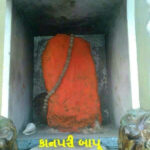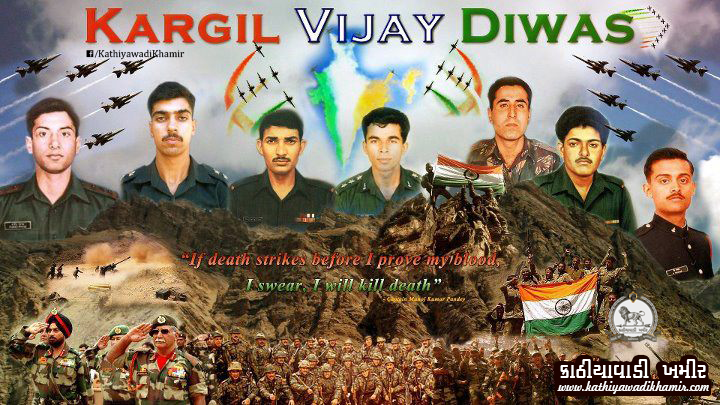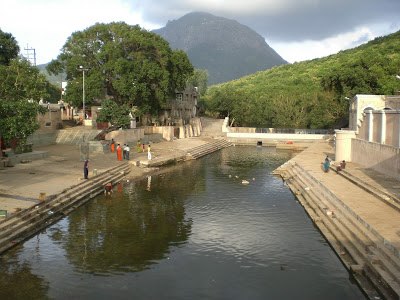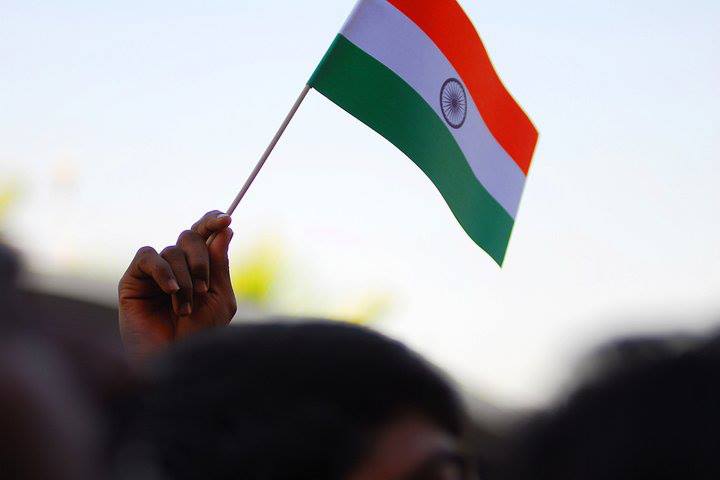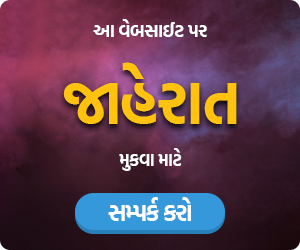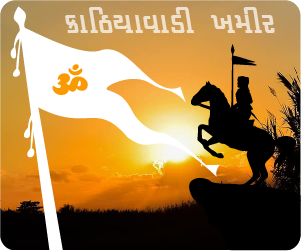કારગીલ યુદ્ધ અંગે થોડી જાણકારી આ મુજબ છે.
1998માં, ભારતે પરમાણુ પરીક્ષણ કર્યા, અને થોડા દિવસ પછી પાકિસ્તાને પ્રતિક્રિયારૂપે વધારે પરમાણુ પરીક્ષણ કર્યા, બંને દેશોએ પોતપોતાની પરમાણુ હુમલાની શકિત બતાવી. 1999માં લાહોર સમિત યોજાયા પછી રાજકીય તણાવો શાંત થયા. આશાવાદનું કિરણ ટૂંક સમય માટે રહ્યું, જો કે, મધ્ય 1999માં પાકિસ્તાની અર્ધલશ્કરી સેનાએ અને કાશ્મીર બળવાખોરોએ ઉજ્જડ પણ વ્યૂહરચનાની દૃષ્ટિએ મહત્વની, ભારતના કારગીલ જિલ્લામાં હિમાલયના શિખરો કબજે કર્યાં. ભારતીય ભૂમિ સેના તે જગ્યા કાતિલ શિયાળાની શરૂઆતમાં ખાલી કરતી હતી, અને ફરીથી વસંત ઋતુમાં કબજો મેળવવાનો હતો. નિયમિત પાકિસ્તાની ટુકડીઓ જેમણે આ વિસ્તાર પર કબજો મેળવ્યો, તેમને શસ્ત્રો અને પૂરવઠો બંને સ્વરૂપે પાકિસ્તાન પાસેથી મહત્વનો સહકાર મળતો રહ્યો. તેમનો કબજો હોય તેવા મહત્વના અમૂક શિખરોમાં ટાઈગર હીલ નો પણ સમાવેશ થયો હતો, જેના પરથી મહત્વનો શ્રીનગર-લેહ હાઈવે (એનએચ 1એ), બતાલીક અને દ્રાસ પર નજર રાખી શકાય છે.ઉનાળામાં કારગીલમાં લડતી ભારતીય ટૂકડીઓ માટે જમ્મુ પાસે ભારતીય ભૂમિસેનાની ટ્રકો પૂરવઠો લઇ જાય છે.
એકવખત પાકિસ્તાના ઓચિંતા હુમલાની જાણ થઇ કે તરત જ ભારતીય ભૂમિ સેનાએ ઝડપથી લગભગ 200,000 ટુકડીઓ સાથે ઓપરેશન વિજયની શરૂઆત કરી. જો કે, શિખરો પાકિસ્તાનના કબજામાં હોવાથી, ચોખ્ખી રીતે ભારત વ્યૂહરચનાની દૃષ્ટિએ પ્રતિકૂળ સ્થિતિમાં હતું. તેમના નજર રાખવાના સ્થાનો પરથી, પાકિસ્તાનની સેનાને ચોખ્ખુ એનએચ 1એનું દૃશ્ય દેખાય તે માટે હાઇવે પર આડકતરી રીતે તોપમારો કરી શકતું હતું અને ભારતીય સેનાને ભારે હાની પહોંચાડતું હતું. આ ભારતીય ભૂમિ સેના માટે ગંભીર સમસ્યા હતી, કારણ કે આ હાઈવે મુખ્ય હેરફેર અને પુરવઠા પૂરો પાડવા માટેનો મુખ્ય રસ્તો હતો. આમ, ભારતીય ભૂમિ સેનાની પહેલી પસંદગી એનએચ 1એની એકદમ નજદીક આવેલા શિખરો પર પાછો કબજો મેળવવાનો હતો. આના પરિણામે ભારતીય ટુકડીઓએ પ્રથમ નિશાન દ્રાસમાં ટાઈગર હીલ અને તોલોલીંગને બનાવ્યા. તે પછી તરત જ બતાલીક-ટૂરટોકના પેટાવિભાગો, કે જે સિયાચીન ગ્લેસિયરના માર્ગ હતા, તેના પર ઘણા આક્રમણ કર્યા. પોઈન્ટ 4590 કે જે એનએચ 1એ નો નજદીકી દૃશ્ય આપતી હતી તેને 14 જૂને ભારતીય ભૂમિ સેના દ્વારા સફળતાપૂર્વક પાછો કબજે કરી લેવાયું.
જો કે મોટાભાગના મથકો જે હાઈવેની નજીકમાં આવેલા હતા તે મધ્ય જૂન સુધીમાં ખાલી કરી દેવાયા હતા, દ્વાસ નજીક હાઇવેના અમુક ભાગોમાં યુદ્ધના અંત સુધી છૂટાછવાયા ગોળીબાર નજરે પડતા હતા. એક વખત એનએચ 1એનો વિસ્તાર ચોખ્ખો થઈ ગયો, એટલે ભારતીય ભૂમિ સેનાએ પાક. સેનાને લાઈન ઓફ કંટ્રોલની બીજી બાજુ પાછા કાઢવાનું શરૂ કર્યું. તોલોલીંગનું યુદ્ધ, બીજા હુમલાઓ પૈકી એક, લડાઈ ધીમેધીમે ભારતના પક્ષમાં આવતી હતી. તેમ છતાં, ઘણા મથકો જેમાં સખત પ્રતિકાર થતો હતો, જેમાં ટાઈગર હીલ (પોઈન્ટ 5140) નો પણ સમાવેશ થાય છે, તે પછી યુદ્ધ સમયે મેળવી શકાયા. કારણ કે ઓપરેશન સંપૂર્ણપણે ચાલું હતું જેથી, મથકો જે લાઇન-ઓફ-સાઇટમાં હતા તેમાંથી ઘુસણખોરોને કાઢવા લગભગ 250 તોપ બંદુકોને લાવવામાં આવી હતી. ઘણા મહત્વના સ્થાનો પર, ના તો તોપ ના તો હવાઈ શકિતઓ હટાવવામાં મદદરૂપ થઈ શકતી, દૂરના મથકો પણ પાકિસ્તાનના સૈનિકો દ્વારા બનાવાયેલા બંકર જે નજરની પહોંચની મર્યાદાની બહાર હતા. ભારતીય ભૂમિ સેનાએ થોડા સીધેસીધા મેદાનની ચઢાઈ કરી હુમલો કર્યો જે ધીમી ગતિએ થયું અને 18000 ફીટથી પણ વધારે ઉંચા શિખરો પર ભારે જીવનું જોખમ લઈ આકરી ચઢાઈ કરી. સંઘર્ષના બે મહિના થઈ ગયા, ભારતીય ટુકડીઓએ મોટા ભાગની બધી ટેકરીઓ ધીમેધીમે પાછી મેળવી લીધી, જે તેમણે ગુમાવી દીધી હતી. કાયદાકીય ગણતરી મુજબ અંદાજિત 75-80 % ઘુસણખોરી કરાયેલા વિસ્તાર અને લગભગ બધા ઊંચા મેદાનો ભારતના નિયંત્રણ હેઠળ પાછા આવી ગયા હતાં.
જુલાઈ 4એ, વોશીંગ્ટનની સલાહ મુજબ, શરીફે પાકિસ્તાનની ટુકડીઓને પાછી બોલાવવાનું નક્કી કર્યું, મોટાભાગની લડાઈ ધીરે ધીરે થંભી ગઈ, પરંતુ એલઓસીની ભારતની બાજુએ થોડીક પાકિસ્તાનની સેના તેમની સ્થિતિમાં જ રહી. ઉપરાંત, યુનાઈટેડ જીહાદ કાઉન્સીલે (તમામ ઉગ્રવાદના સમૂહ માટે છત) પાકિસ્તાનની લડાઈ ચાલુ રાખવાના નિર્ણયના બદલે, પાછા હટવાની યોજનાને નકારી કાઢી. જુલાઈના છેલ્લા અઠવાડિયાઓમાં ભારતીય ભૂમિ સેનાએ તેના અંતિમ હુમલા શરૂ કર્યા, તરત જ દ્રાસના પેટાવિભાગો પાકિસ્તાનની સેના હટાવીને ચોખ્ખા થઈ ગયા, અને 26 જુલાઈએ યુદ્ધ બંધ થયું. ત્યારથી જ તે દિવસને ભારતમાં કારગીલ વિજય દિવસ તરીકે ઓળખાવવામાં આવ્યો.
યુદ્ધના અંત સુધીમાં, ભારતે લાઈન ઓફ કંટ્રોલના દક્ષિણી અને પૂર્વીય તમામ પ્રદેશો પર કબજો મેળવી લીધો હતો, લાઈન ઓફ કંટ્રોલની સ્થાપના 1972 જુલાઈમાં શિમલા સમજુતી મુજબ થઈ હતી. આ સમય સુધીમાં બધી દુશ્મનાવટ ખતમ થઈ ગઈ હતી, યુદ્ધમાં મૃત્યુ પામેલા ભારતીય જવાનોની સંખ્યા 527 હતી. જ્યારે 700થી વધારે પાકિસ્તાની સેનાના નિયમિત સભ્યો મૃત્યુ પામ્યા હતા. ઈસ્લામિક યોદ્ધાઓની સંખ્યા, જેમને મુજાહિદ્દીન પણ કહેવાય છે, જે સંઘર્ષ દરમિયાન ભારતીય ભૂમિ સેના દ્વારા મૃત્યુ પામ્યા તેમની સંખ્યા લગભગ 3000 હતી…
Kargil Vijay Diwas
named after the success of Operation Vijay. On this day, 26 July 1999, India successfully took command of the high outposts which had been lost to Pakistani intruders. The Kargil war was fought for more than 60 days, ended on 26 July. and resulted in the loss of life on both sides, India and Pakistan. Pakistan retreated after international diplomatic pressure.
Kargil Vijay Diwas is celebrated on 26 July every year in honour of the Kargil War’s Heroes. This day is celebrated in the Kargil – Dras sector and the national capital New Delhi, where the Prime Minister of India, pays homage to the soldiers at Amar Jawan Jyothi at India Gate every year. Functions are also organized all over the country to commemorate the contribution of the Armed forces.
History
After the Indo-Pakistani War of 1971, there had been a long period with relatively few direct armed conflicts involving the military forces of the two neighbors – notwithstanding the efforts of both nations to control the Siachen Glacier by establishing military outposts on the surrounding mountains ridges and the resulting military skirmishes in the 1980s. During the 1990s, however, escalating tensions and conflict due to separatist activities in Kashmir, some of which were supported by Pakistan[citation needed], as well as the conducting of nuclear tests by both countries in 1998, led to an increasingly belligerent atmosphere. In an attempt to defuse the situation, both countries signed the Lahore Declaration in February 1999, promising to provide a peaceful and bilateral solution to the Kashmir conflict.During the winter of 1998 -1999, some elements of the Pakistani Armed Forces were covertly training and sending Pakistani troops and paramilitary forces, some allegedly in the guise ofmujahideen, into territory on the Indian side of the LOC. The infiltration was code named “Operation Badr”,its aim was to sever the link between Kashmir and Ladakh, and cause Indian forces to withdraw from the Siachen Glacier, thus forcing India to negotiate a settlement of the broader Kashmir dispute. Pakistan also believed that any tension in the region would internationalise the Kashmir issue, helping it to secure a speedy resolution. Yet another goal may have been to boost the morale of the decade-long rebellion in Indian Administered Kashmir by taking a proactive role.
Initially, with little knowledge of the nature or extent of the infiltration, the Indian troops in the area assumed that the infiltrators were jihadis and claimed that they would evict them within a few days. Subsequent discovery of infiltration elsewhere along the LOC, and the difference in tactics employed by the infiltrators, caused the Indian army to realize that the plan of attack was on a much bigger scale. The total area seized by the ingress is generally accepted to between 130 km² – 200 km².
The Government of India responded with Operation Vijay, a mobilisation of 200,000 Indian troops.Finally war came to an official end on July 26, 1999, thus making it the Vijay Diwas.
